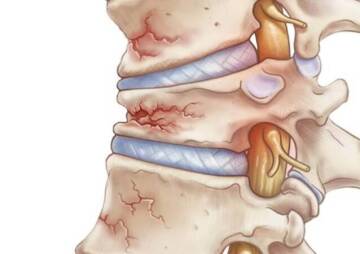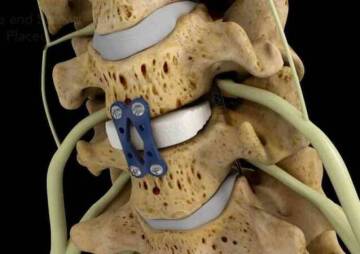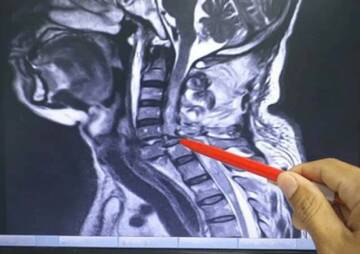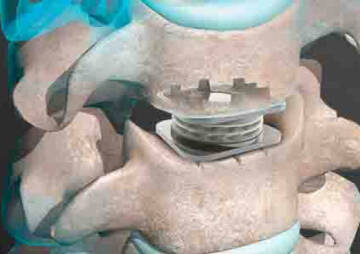-
Category
Craniomaxillofacial Surgery
Orthopedic Surgery
Spine Surgery
Orthopedic Implants
Hip Surgery
Knee Surgery
Pectus Excavatum
Bone Graft
Disinfectants
Healthcare
Familiarity with different types of compression fractures, causes, diagnosis and treatment

When a spine is injured, the most common fracture problem is a compression fracture. In this article, you will learn about compression fractures in the spine.
When a vertebrae are damaged, the most common problem is a fracture. The most common type of vertebral fracture is also called compression fractures. Compression fractures occur when natural vertebrae are crushed or squeezed from the spine.
What is a compression fracture?
Compression fracture is a type of pressure-induced fracture in the spine bone that results in a part of the vertebra being crushed and reduced in height by at least 15 to 20 percent. This fracture is classified into three different types: Wedge fracture, Crush fracture and Burst fracture.
Although this type of fracture is very common, it is not diagnosed because its symptoms are very similar to lumbar muscle strain or damage to other back tissues. As a result, approximately two-thirds of the compression fractures that occur each year go undiagnosed and untreated. Therefore, familiarity with this type of fracture and its symptoms can be a great help for its early treatment.
Familiarity with different types of compression fractures
Compression fractures mostly occur in the middle and lower part of the spine and are divided into three different types.
Wedge fracture
A wedge compression fracture usually occurs in the anterior part of the vertebrae and causes the anterior part of the vertebral bone to fall off. In this case, the back of the nut remains unchanged, resulting in a wedge-shaped nut. A wedge fracture is usually a permanent mechanical fracture, but can lead to deformity of the spine, causing limb defects such as a hump.

Crushing fracture
In this type of vertebral fracture, the entire vertebral bone disintegrates on its own and the vertebrae become crushed. These fractures are usually mechanically stable.
Burst fracture
Burst fracture is one of the most important types of compression fractures because it will cause the spine to be unstable and over time may cause damage to its nervous system.
In this type of compression fracture, the vertebra is broken and collapsed in several ways. With vertebral collapse, most of the broken bone parts damage the tissues around the spine or spinal cord. Therefore, it needs immediate treatment.

Symptoms of compression fracture
About two-thirds of people with osteoporotic pressure fractures have no symptoms. They do not feel pain when a fracture occurs. Sometimes vertebral fractures begin with acute pain and then manifest as chronic pain. The pain usually subsides after about four weeks and disappears after 12 weeks.
Other symptoms include thoracic kyphosis, short stature, and shrinkage of internal organs. In addition, muscle weakness weakens the body due to lack of physical activity and the strength of aerobic activity decreases.

The main clinical signs of compression fractures include one or a combination of the following:
- Sudden onset of back pain
- Feeling pain when bending or twisting the back
- Increased pain when standing or walking
- Reduce pain when sleeping on your back
- Restriction of spinal movement
- Weight Loss
- Spinal deformity and disability
- Pelvic pain
- Breathing problems
Because most fractures damage the front of the vertebrae, the fracture is permanent and rarely damages the spinal cord and nerves, and does not cause symptoms such as numbness or tingling.

Causes of Compression Fracture
One of the most common causes of compression fractures is osteoporosis . This problem is especially common in women over the age of 50. Osteoporosis causes thinning, brittleness and weakening of the bones. Bones may break during normal activity when they become thin and brittle. For example, when a person is lifting an object off the ground or falls from a short distance. In this case, compression fractures can cause severe pain and permanent deformity of the spine.
In cases of advanced osteoporosis, even sneezing, coughing, or rolling over in bed can cause vertebral fractures.
Trauma to the vertebrae of the spine is also a cause of partial or severe compression fractures. An impact can be caused by a fall, a sharp jump, a car accident, or any other event, and can put pressure on the bones of the spine from the point of fracture.
Tumors can also cause compression fractures to some extent. Sometimes the cancer starts in other parts of the body and spreads to the bones of the spine. As the tumor spreads, the bones of the spine are severely damaged.

How is compression fracture diagnosed?
The diagnosis process begins with a review of the patient's medical history and continues with a clinical examination, x-ray, CT scan, MRI, and nuclear scan to determine the type and extent of the fracture.
How is compression fracture treated?
At first, cautious methods are used to treat spinal fractures. As:
- Absolute rest for a maximum of three months
- Use braces to restrict spinal movement
- Physiotherapy and training exercises to strengthen the muscles around the spine
- Use of nonsteroidal anti-inflammatory drugs such as acetaminophen and ibuprofen to reduce pain
- Use of bisphosphonates and sometimes calcitonin for people with osteoporosis. In order to prevent bone breakdown and increase bone density
Surgical treatment is recommended if the doctor deems it necessary . Compression fracture surgery is performed in two ways: kyphoplasty and vertebroplasty. If the spine is unstable and there is a possibility of damage to the spinal cord, it is necessary to perform fusion of the vertebral bones.
Who is at risk for compression fractures?
The following people are more at risk for pressure fractures:
- Women, especially those who have gone through menopause
- Older men, especially those over 60 years old
- People who are deficient in calcium

Compression fractures are problematic but treatable
The spine is the main support for the trunk, neck, head and spinal cord, so it plays an important role in the body structure and nervous system. Therefore, identifying and resolving any spinal problems can be challenging.
One of the most painful and problematic diseases of the spine is compression fractures of the spine. These fractures are often caused by osteoporosis.
Although most spinal compression fractures eventually heal on their own, they can lead to decreased height and hump. If the main symptom of a compression fracture is severe or prolonged pain, there are several techniques for controlling the pain. Some spine stabilization options are also available.






